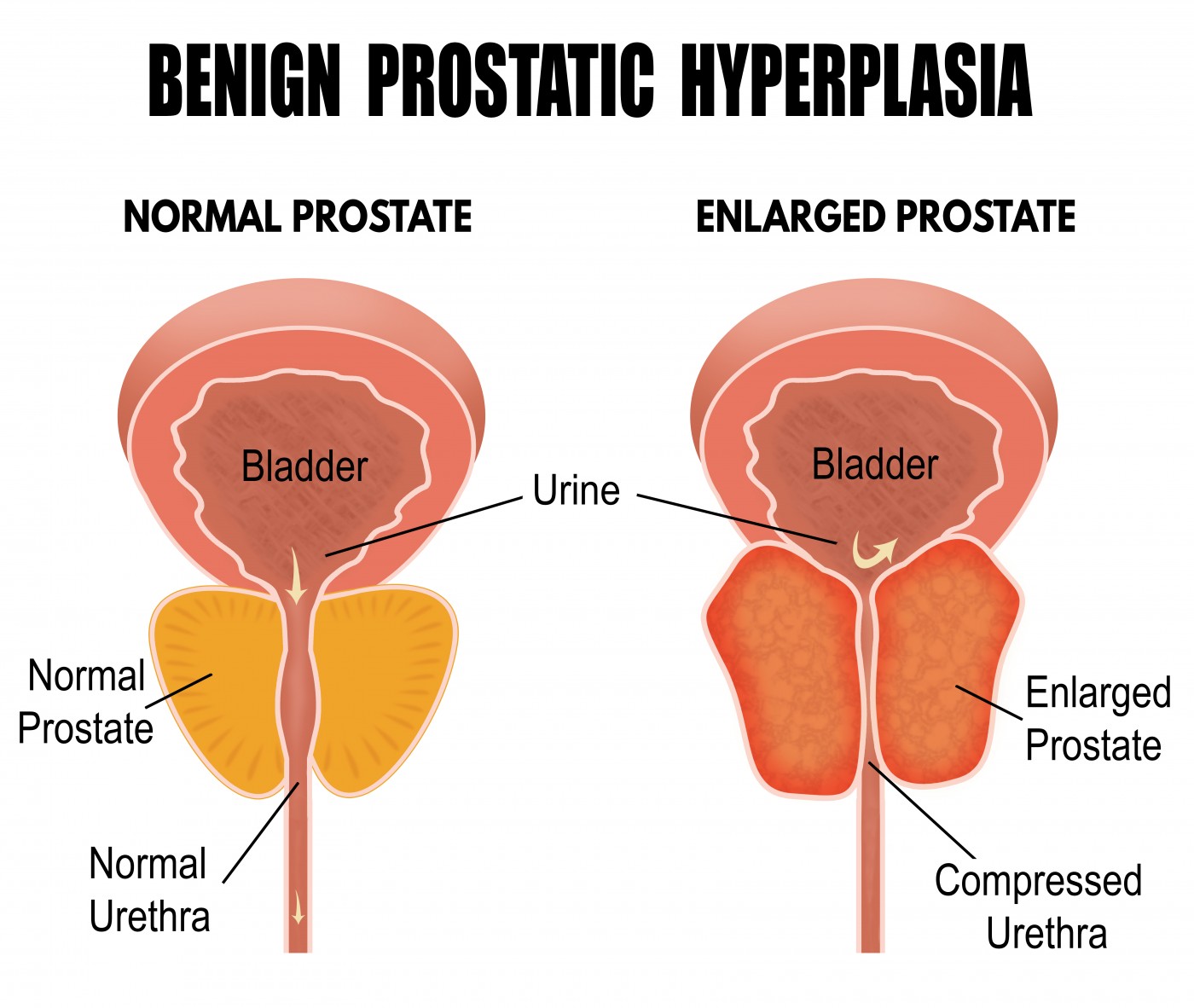What is BPH?
Benign Prostatic Hyperplasia (BPH) is a non-cancerous enlargement of the prostate gland that can cause urinary difficulties. It becomes more common with age, particularly after 50.


Causes
- BPH is linked to hormonal changes, specifically testosterone and its derivative,
dihydrotestosterone (DHT). - Certain medications (e.g., antihistamines, decongestants) can temporarily
worsen symptoms by reducing bladder contraction.
Symptoms
BPH develops as the enlarged prostate compresses the urethra, leading to:
- Difficulty starting urination
- Weak or interrupted urine flow
- Frequent urination, especially at night (nocturia)
- Urgency to urinate
- Feeling the bladder hasn’t emptied fully
These symptoms are sometimes called Lower Urinary Tract Symptoms (LUTS)
and may overlap with other conditions like bladder infections or prostate cancer.
Complications
If untreated, BPH can lead to:
- Bladder infections or stones due to urine stagnation
- Kidney damage from prolonged pressure on the bladder
- Complete urinary retention, causing pain and the inability to urinate
Diagnosis
- Digital Rectal Exam (DRE): Checks for prostate enlargement.
- PSA Test: Elevated levels can indicate BPH or prostate cancer.
- Uroflowmetry: Measures urine flow speed and bladder emptying.
- Imaging Tests (e.g., Ultrasound, MRI): Help assess prostate size and rule out cancer.
- Manage
heart conditions with regular check-ups.
- BPH is linked to hormonal changes, specifically testosterone and its derivative,
Treatment Options
Medications:
- Alpha-blockers (e.g., Tamsulosin): Relax prostate muscles, improving urine flow.
- 5-Alpha Reductase Inhibitors (e.g., Finasteride): Reduce prostate size by blocking DHT.
Surgery:
- Transurethral Resection of the Prostate (TURP): Removes prostate tissue to relieve obstruction.
- Newer, minimally invasive procedures include laser therapy, microwave thermotherapy, and radiofrequency ablation.
Takeaway
BPH is common but manageable with proper medical guidance. If you experience
urinary symptoms, consult your doctor for early diagnosis and treatment.
Regular follow-ups can prevent complications and improve your quality of life.
